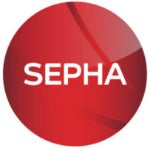The increased need for pharmaceutical packaging companies to reduce waste and disposal costs in a way that minimises the impact on the environment has led to an increased demand for specialised deblistering machines, according to Sepha. The machines, called press-outs, are used to increase production yields by recovering valuable product from the line. They enable the easy removal of tablets from rejected blister packs, so they can be re-packaged again.
In response to this interest, Sepha is taking press-outs on tour around the world at major exhibitions in the US, Europe and Asia commencing with Packtech Expo Balkan in Belgrade on 23 September followed by Fachpack in Nuremburg, Germany, Pack Expo in Las Vegas, Scanpack in Sweden and China Pharm in Shanghai in October, and PMEC in Mumbai, India, in December.
“We’re delighted to be taking press-outs around the world, commencing with Eastern Europe, to show pharmaceutical companies how they can simplify and reduce the cost of de-blistering tablets. They transform a laborious task traditionally done by hand into an automated process. It is also less expensive and more environmentally friendly to dispose of empty blisters than filled ones. Press-outs can even help with inventory management by enabling the repacking of products into alternative formats. From a health and safety perspective mechanical de-blistering prevents sore or cut fingers and the risk of RSI or carpal tunnel syndrome,” explains Sepha’s chief executive, Aubrey Sayers.
Sepha’s range of press-out machines are some of the fastest on the market and are able to handle a wide variety of even the most delicate tablets and capsules. There are portable manual, semi-automatic and fully automatic versions. Top of the range is the state-of-the-art press-out Universal, which empties tablets and capsules from reject blister packs at a rate of up to 50 blisters per minute. It handles medium to large batches of all types of blister formats and designs and its unique cutting action is gentle, even on fragile tablets, peelable or child-resistant blister packs, making it ideal for valuable products.
Press-out Automatic also has a fully automatic feed. It is easy to use and low maintenance with no specialist skills required. The speed of operation can be varied to a maximum of 60 blister packs per minute. Blister packs are automatically fed from the magazine stack through a set of rollers and gently eased out of the blister to be collected separately from the waste packaging. Format changeover does not require tools and takes less than 3min.
Alternatively, blister packs can be manually fed through Manual / Manual Wide on a set of rollers by a turning handle. The tablets or capsules are simultaneously removed from the blister pack and separated from the waste packaging. It can take up to 20 packs per minute. The Manual press-out is suitable for in-line blister packs only, while the Manual Wide press-out can also cope with a diagonal / offset layout. The single set of tooling is fully adjustable and training for use takes less than 15min.
Finally, single blister packs can be automatically fed through press-out Semi Automatic. The machine uses the same patented de-blistering mechanism as the manual model but is driven by an electric motor providing automated feed allowing a de-blistering rate of up to 40 blisters per minute with tooling change over taking less than 5min.
Dispensing pharmacies who cater for patients with a daily requirement for a number of different drugs are also availing of the cost and time-saving benefits of press-outs. The machines can be used to de-blister the drugs so they can be repackaged into monthly user-friendly packs, tailored to each patient’s needs.

